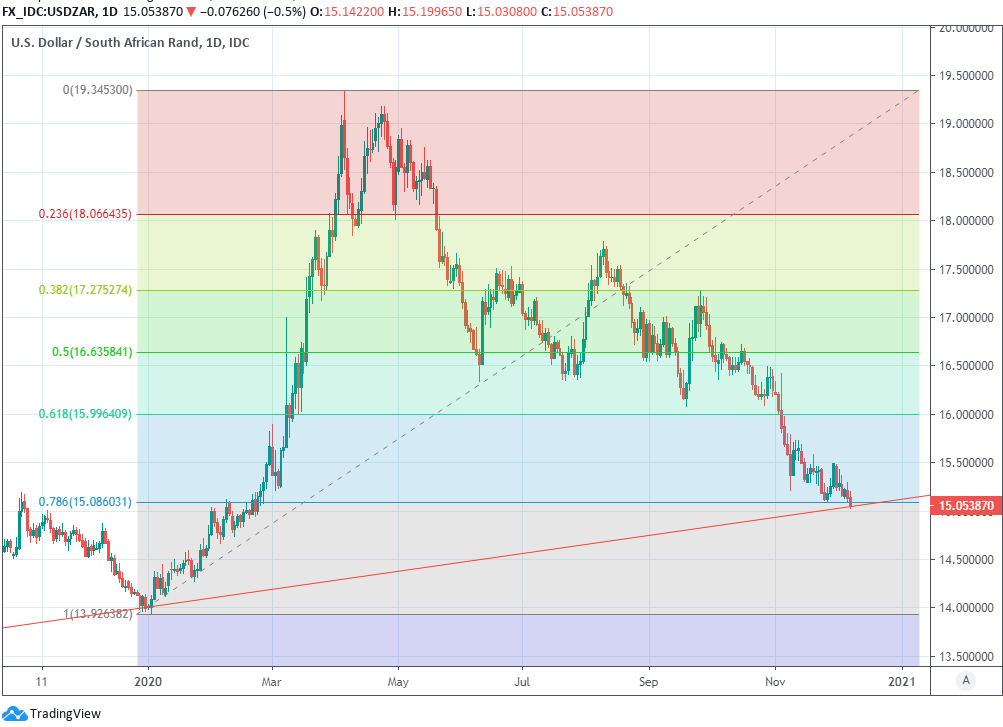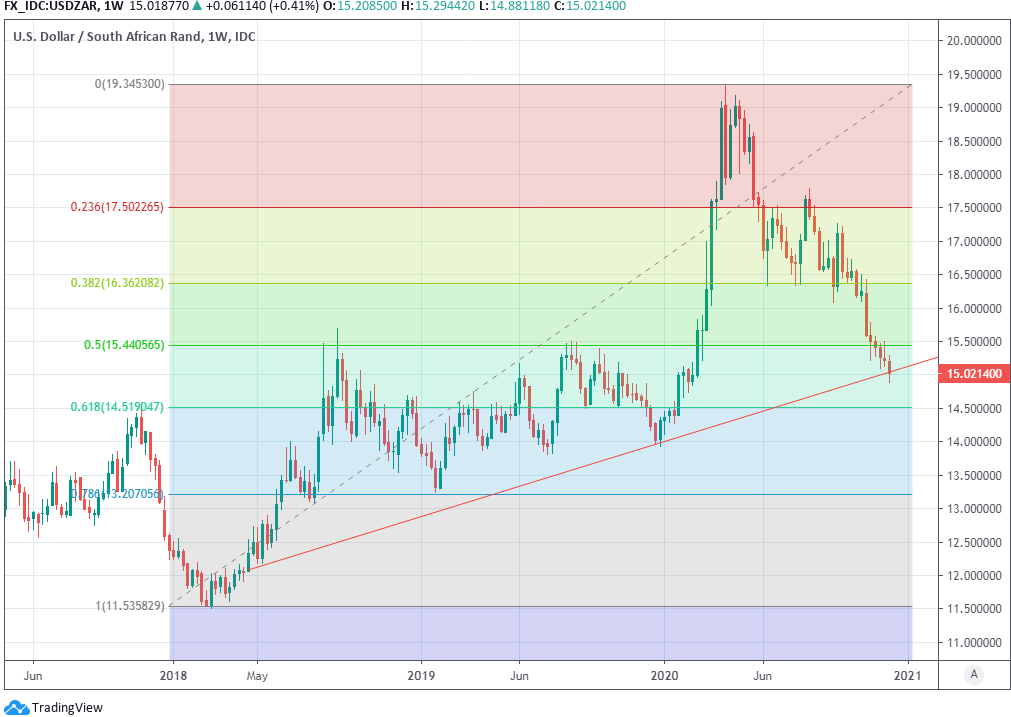South African Rand Eyes 14.50 after Breaking Key Resistances on the Charts
- Written by: James Skinner
-

Image © Adobe Images
- GBP/ZAR spot rate at time of writing: 1996
- Bank transfer rate (indicative guide): 19.26-19.40
- FX specialist providers (indicative guide): 19.66-19.82
- More information on FX specialist rates here
The Rand softened on Thursday following a sustained run of outperformance and as investors digested a volley of mixed economic figures, although a return to highs not seen since late January could be only a matter of time following this week's breakout on the charts, according to technical analysts.
South Africa's Rand retreated from all major currencies except a Brexit-blighted Pound Sterling on Thursday while also ceding ground to most other emerging market units as investors digested the latest current account balance and industrial production figures.
October's mining and manufacturing production figures indicated that South Africa's recovery slowed early in the final quarter following strong growth previously, although the slowdown took place even before the country's second wave of coronavirus infections truly gathered pace in November.
"While not as visible as for mining production, manufacturing activity confirms the ongoing loss of economic momentum," says Cristian Maggio, head of emerging market strategy at TD Securities.
Manufacturing production fell -3.9% in October when compared with the same period a year ago, a greater fall than the -1.9% seen previously but a smaller decline than the -5.1% anticipated by economists.
Above: USD/ZAR shown at daily intervals with Fibonacci retracements of 2018 rally and 2018-to-2020 trendline.
But mining production fell by -6.3% in October, a larger fall than both the -4.7% anticipated by economists as well as the -3.4% seen in September. This and the waining economic recovery that it speaks of came in contrast with a third-quarter surge in the current account surplus.
South Africa's current account balance rose to 5.9% of GDP last quarter, up from a deficit of -2.9% in the prior period, following strong export growth that helped to boost the trade in goods and services surplus that would normally be supportive of almost any currency.
However, softening October industrial activity provides an early taste of what could be just around the corner for the economy in light of South Africa's second wave of coronavirus infections, which led the government to resort to localised forms of 'lockdown' as a means of containment last week.
"SA is coming up trumps as non-residents capitalise on the lucrative yields on the long end of the nominal bond curve, resulting in a 5bp dip in the R2048 yield yesterday. Spot rand is suspended below USD/ZAR15.00 for the first time in 10 months, entrenching itself as the third best performing EM unit this month," says Nema Ramkhelawan-Bhana, head of research at Rand Merchant Bank. "The local and global stars have aligned in a favourable risk pattern. That’s all good and well if the rising infection rates in SA do not derail the economic progress made in the third and fourth quarters."
The Rand was already a relative outperformer for the week as well as month before Thursday and so may have been liable for a period of consolidation or even underperformance anyway.
Above: USD/ZAR shown at weekly intervals with Fibonacci retracements of 2018 rally and 2018-to-2020 trendline.
Thursday's figures came hard on the heels of Tuesday's Statistics South Africa data suggesting that GDP rose by an annualised rate of 66.1% last quarter, a significant outperformance of the market consensus for a 52.6% increase.
Last quarter's rebound was far greater than the historic -51.7% collapse observed in the prior period when vast parts of the economy came to a standstill as a result of government curbs on activity aimed at containing the coronavirus.
However, all this came before President Cyril Ramaphosa placed Nelson Mandela Bay, the Sarah Baartman District in the Eastern Cape and the Garden Route District in the Western Cape into a form of 'lockdown' last week in response to a second coronavirus wave.
It wasn't clear on Thursday whether the Rand's softness resulted from mixed economic figures or if it simply reflected a currency that was pausing for breath following a sustained rally. However, technical analysts at Credit Suisse remained confident that the downtrend in USD/ZAR is not yet over.
"USDZAR continues to move lower after breaking beneath the crucial 200-day average in September. The market recently also broke beneath the pivotal uptrend from 2018, which should lead to a further acceleration of downside momentum, with support seen next at the 61.8% retracement at 14.50," says David Sneddon, a technical analyst at Credit Suisse. "Removal of here would open up the 2020 low at 13.93, where we expect the market to take a breather."












